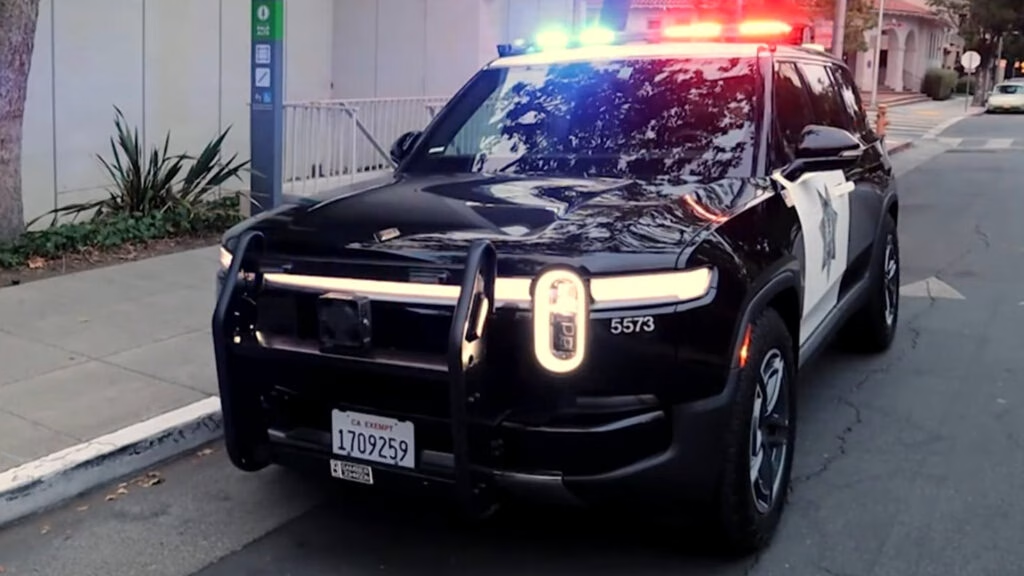Why Did Palo Alto Choose the Rivian R1S for Its Police Fleet?
When Palo Alto’s police department rolled out its first Rivian R1S patrol vehicle, it turned a few heads—and not just because of the glossy black paint job. This isn’t your typical police cruiser. The city, known for its tech-forward mindset and as the home of both Rivian’s headquarters and Tesla’s global engineering hub, wanted a patrol car that reflected its innovative spirit. Yet, despite Tesla’s local presence, Palo Alto opted for Rivian’s electric SUV.
So, why Rivian? According to Assistant Chief James Reifschneider, the R1S integrates seamlessly with the department’s existing technology, making it a natural fit for a city that prides itself on staying ahead of the curve. Reifschneider also highlighted the R1S’s spacious interior, noting it offers more room than the Ford Explorers and Jeep Durangos currently in the fleet. For officers who spend hours on patrol, that extra space isn’t just a luxury—it’s a necessity.
How Does the R1S Compare to Other Police EVs?
California’s push toward electrification isn’t new, but the vehicles chosen for police work have sparked plenty of debate. South Pasadena, for instance, swapped its entire fleet for Tesla Model 3s and Model Ys. The result? Mixed reviews. While the Teslas deliver on speed and efficiency, officers have complained about cramped cabins and limited cargo space—two things you don’t want to compromise on in law enforcement.
The Rivian R1S, by contrast, is a full-size SUV with a starting price north of $75,000. That’s a hefty sum, but it buys a lot of utility. The R1S can accommodate more gear, more tech, and more people. For departments juggling everything from traffic stops to emergency response, that flexibility is crucial. Still, the higher price tag means not every city can make the leap just yet.
What Customizations Are Needed Before the R1S Is Patrol-Ready?
Rolling out an electric SUV as a police cruiser isn’t as simple as slapping a badge on the door. The Palo Alto R1S still needs a few finishing touches before it’s fully ready for duty. At its debut, the vehicle was missing the iconic red and blue roof light bar—a must-have for any patrol car. There’s also talk of adding a push bar and other specialized equipment inside the cabin.
Rivian’s engineers are working hand-in-hand with the city to ensure the SUV meets every operational need. This kind of collaboration is key; police vehicles require unique modifications, from secure storage for firearms to advanced communication systems. The process takes time, but the payoff is a patrol car that’s truly tailored to the job.
Are Other Cities Making the Switch to Electric Police Vehicles?
Palo Alto isn’t alone in its EV experiment. Across California, several police departments are testing electric vehicles in their fleets. According to a 2023 report from the California Air Resources Board, more than a dozen agencies statewide have piloted electric patrol cars, with varying degrees of success. Some, like South Pasadena, have gone all-in. Others are taking a more cautious approach, adding one or two EVs at a time to see how they perform in real-world conditions.
The biggest hurdles? Cost, charging infrastructure, and concerns about range. While EVs offer lower operating costs and zero tailpipe emissions, the upfront investment is significant. Departments also need reliable charging stations, both at headquarters and out in the field. And while modern EVs like the R1S boast impressive range, there’s still anxiety about running out of juice during a long shift.
What Do Officers Think About Driving the R1S?
Change can be tough, especially in a profession steeped in tradition. But early feedback from Palo Alto officers has been largely positive. The R1S’s quiet ride and instant torque make it a pleasure to drive, and the extra cabin space is a hit with taller officers and those carrying lots of gear. There’s also a sense of pride in piloting a vehicle that aligns with the city’s sustainability goals.
Of course, there are skeptics. Some officers worry about the learning curve that comes with new technology, while others question whether an EV can handle the rigors of police work. These concerns are valid, but as more departments adopt electric vehicles, best practices are emerging to address them.
What’s Next for Electric Police Vehicles in Palo Alto?
For now, the Palo Alto Police Department is taking a measured approach. The R1S is being tested and evaluated before any decisions are made about expanding the fleet. City officials are watching closely, weighing the benefits against the costs and logistical challenges.
One thing’s clear: the move to electric patrol vehicles isn’t just a trend—it’s a sign of where law enforcement is headed. As battery technology improves and costs come down, expect to see more EVs with flashing lights on your local streets.
The big takeaway? Modernizing a police fleet isn’t about perfection—it’s about smarter adjustments. Start with one change this week, and you’ll likely spot the difference by month’s end.

